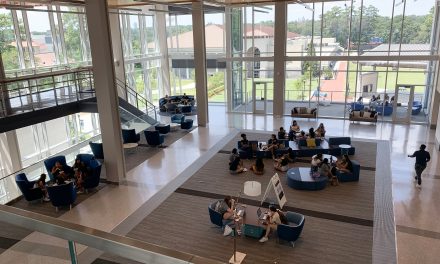Students living in Few and Evans residence halls have had to deal with a bit of gas recently.
Construction around these two residence halls – involving flushing out gas lines to prepare for Phase Five of the Freshman Quadrangle – began on Sept. 17 and ended Sept. 21.
BGI, a sub-contractor for Atlanta Gas Light, completed the construction over the course of the last few days.
The project is an example of a routine procedure that is done in many places across Atlanta and the rest of the country whenever old gas lines are retired.
The only disturbances students living near the construction faced were a minor gas smell near their residence halls and temporary sidewalk closures along Eagle Row.
Because the gas lines are located near the new residence hall, the construction company needed to re-route them around the job site in order to proceed with grading activities.
The project began with the installation of a new gas line so that the old gas lines could eventually be removed.
The construction left some students wondering whether the project could be harmful, but because the gas was vented at the end of an eight-foot pipe stack, the gas released dissipated very quickly, according to Glenn Kulasiewicz, the project manager of planning, design and construction at Emory.
In addition, gas is lighter than air, which aids in the dissipation of the gases that are released, Kulasiewicz added.
“I feel like there are always maintenance projects like these going on around campus, so I don’t even notice them anymore,” said College sophomore and Few Sophomore Advisor Diane Ryu. “I’m more excited to see what the new freshmen [residence halls] will look like.”
– By Minah So
The Emory Wheel was founded in 1919 and is currently the only independent, student-run newspaper of Emory University. The Wheel publishes weekly on Wednesdays during the academic year, except during University holidays and scheduled publication intermissions.
The Wheel is financially and editorially independent from the University. All of its content is generated by the Wheel’s more than 100 student staff members and contributing writers, and its printing costs are covered by profits from self-generated advertising sales.





